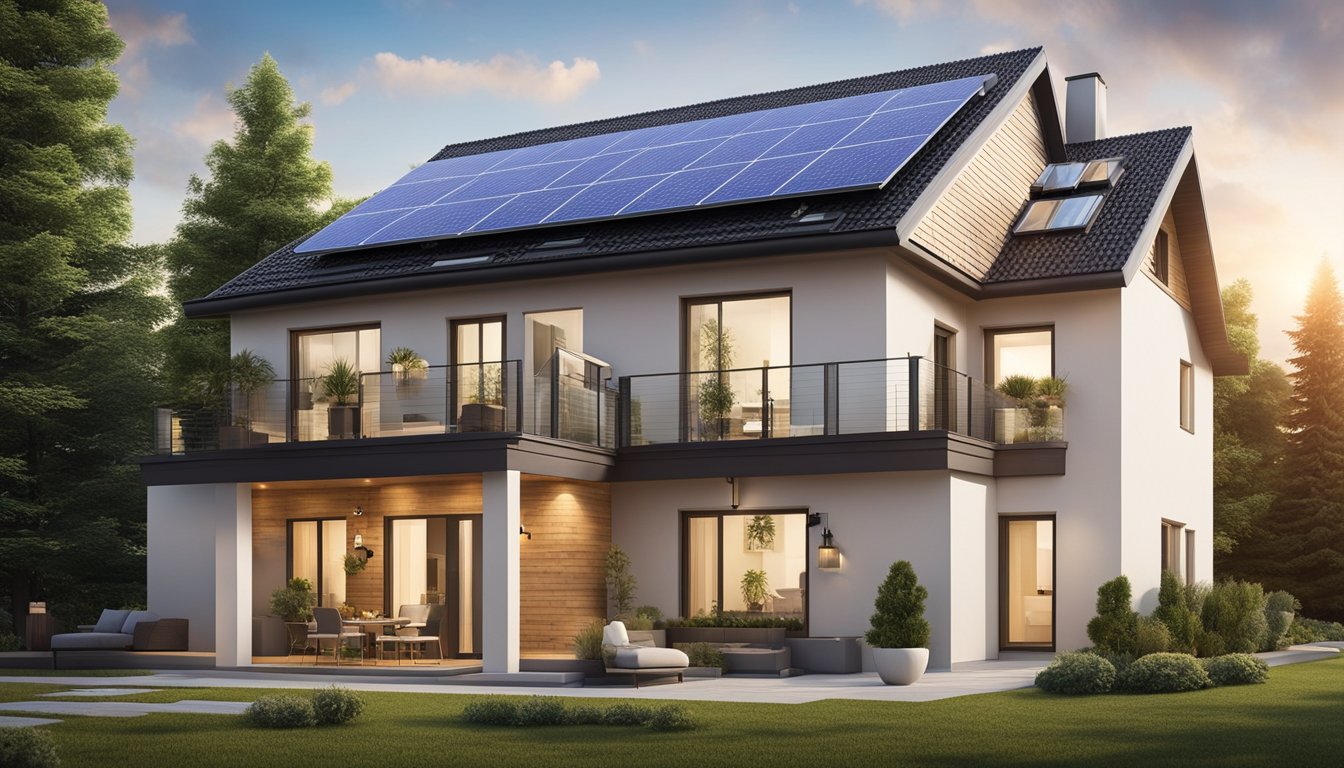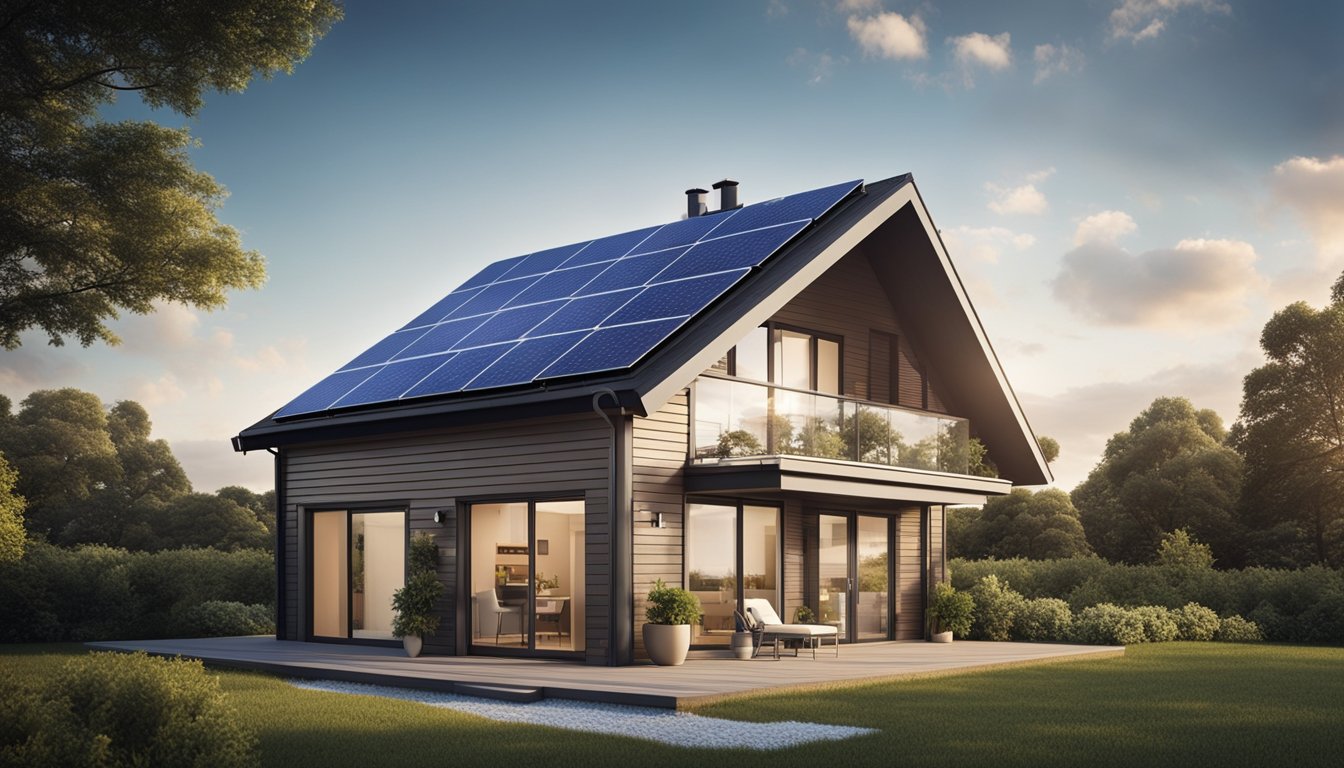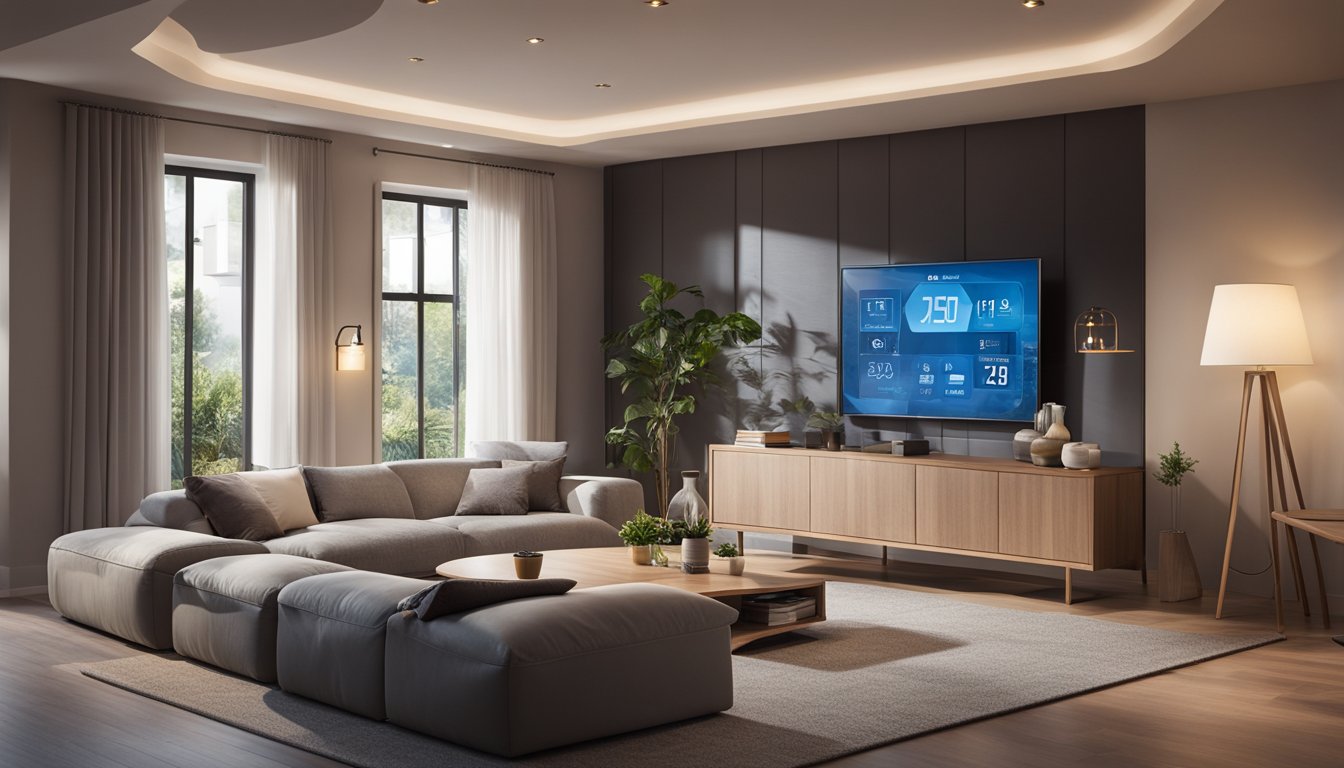Late updated: 23 Oct 2024 09:10
Written by: Daniel Harper
Cost-Effective Ways To Enhance Home Energy Efficiency: Practical Tips for Every Household
Enhancing home energy efficiency is a smart way to save money and contribute positively to the environment. Many people overlook the simple changes they can make to reduce energy waste while cutting down on their energy bills. Sealing cracks and improving insulation in your home can save up to 10% on heating and cooling costs, offering a high return on investment.

We all desire a comfortable home that doesn't break the bank, especially during seasonal extremes in temperature. Cost-effective solutions such as switching to energy-efficient LED light bulbs and washing clothes in cold water contribute significantly to lowering monthly utility costs. As energy costs continue to rise, adopting efficient solutions becomes necessary, not optional.
Our commitment to energy efficiency isn't just about economics; it's about creating a sustainable way of living. By implementing strategic upgrades and adopting energy-saving habits, we can make our homes more efficient and environmentally friendly without major financial outlays. Let's explore practical steps that help manage energy use wisely and effectively.
Key Takeaways
- Improve insulation to cut energy costs.
- Adopt efficient appliances for savings.
- Simple changes lead to big energy savings.
Assessing Your Home's Energy Performance
To maximise home energy efficiency, it's essential to evaluate current energy usage and identify areas for improvement. By focusing on audits, insulation, and upgrading key components like windows and doors, we can address significant energy waste and enhance our energy savings.
Conducting Energy Audits
Home energy audits are the starting point for understanding how our homes consume energy. Professional audits involve comprehensive evaluations, utilising specialised equipment to detect inefficiencies. Auditors inspect heating and cooling systems, insulation levels, and possible air leaks.
Alternatively, we can perform basic self-assessments by identifying obvious drafts and reviewing utility bills to spot patterns in energy costs. Both approaches guide us in targeting improvements that can most effectively reduce energy bills. Reducing unnecessary energy expenditure is crucial for long-term savings.
Improving Insulation and Air Sealing
Proper insulation and air sealing in our homes significantly affect energy efficiency. Insulation materials such as fibreglass and foam help maintain desired temperatures by preventing heat loss in winter and keeping cool air inside during summer. Focusing on areas like the attic, walls, and basement can tackle energy waste.
Air sealing involves closing gaps and cracks around windows, doors, and other openings. This step is vital to prevent drafts and maintain indoor comfort. By improving insulation and sealing leaks, we can reduce the workload on our heating and cooling systems, leading to noticeable energy savings.
Upgrading Windows and Doors
Windows and doors are crucial components that can significantly improve our home's energy efficiency. Replacing single-pane windows with double or triple-pane options is a substantial upgrade. These advanced windows often feature gas fillings and low-emissivity coatings that reduce heat transfer.
When upgrading doors, choosing energy-efficient models with proper sealing will minimise air intrusion and escape. It's important to consider both installation quality and the door materials. Investing in quality windows and doors not only lowers energy costs but also enhances the comfort and value of our homes.
Implementing Cost-Effective Energy-Efficient Solutions

To make our homes more energy-efficient in a cost-effective manner, certain measures stand out. These include selecting energy-efficient appliances, optimising how we heat water, integrating smart thermostats along with HVAC upgrades, and adopting efficient lighting options. Each approach is designed to cut down on energy usage and expenditure.
Choosing Energy-Efficient Appliances
When upgrading appliances, opting for Energy Star certified products makes sound financial sense. These appliances, while sometimes carrying a higher initial cost, can significantly save us money over time through reduced energy bills. Older models are usually less efficient, making them more expensive to run.
Energy Star appliances, like refrigerators and washing machines, utilise innovative technologies that save energy. Regular maintenance also plays a key role in keeping them running efficiently. We should consistently check for any issues that might affect their performance, ensuring they function as intended.
Optimising Water Heating
Water heating accounts for a sizeable portion of our utility bills. To enhance efficiency, installing heat pump water heaters can be beneficial. They use existing heat in the air or ground, transferring it to heat water, thus consuming less electricity than traditional water heaters.
Setting the water heater thermostat to around 60°C can further improve efficiency. Insulating hot water pipes reduces heat loss, ensuring we retain as much energy as possible. For those with older units, upgrading to more energy-efficient models is a practical step towards reducing energy expenses.
Integrating Smart Thermostats and HVAC Upgrades
Investing in smart thermostats can lead to significant energy savings. These devices allow us to set temperatures based on our schedules, lowering heating and cooling costs. They can be programmed to operate only when necessary and can adjust for outside weather conditions.
Pairing a smart thermostat with HVAC system upgrades results in a more efficient heating and cooling system. Modern HVAC systems are designed to work seamlessly with smart technology, optimising performance and efficiency. Routine maintenance ensures these systems remain in peak condition, further enhancing our home's energy profile.
Adopting Efficient Lighting
Switching to energy-efficient lighting, like LED bulbs, substantially cuts energy use. LED lights consume less power and have longer lifespans compared to traditional incandescent bulbs. Although the upfront cost is higher, the energy savings and decreased replacement frequency make them highly cost-effective.
It's also essential that we take advantage of natural light when possible. Arranging spaces to make the most of daytime lighting can reduce the need for artificial lights, thus lowering consumption. Ensuring light fixtures are clean and free from obstructions helps maintain optimal light output.
Frequently Asked Questions

Enhancing home energy efficiency can be both affordable and effective. Let's explore practical measures for increasing thermal efficiency, improving energy performance, and minimising energy costs.
What are affordable measures to enhance the thermal efficiency of a house?
Increasing insulation is a proven method. Adding insulation can address a significant amount of energy waste. Options such as blown-in cellulose or spray foam provide thermal benefits. ENERGY STAR windows and doors can also contribute to better thermal efficiency.
How can one improve their household's energy performance without significant expense?
Sealing cracks and gaps is crucial. Weatherstripping doors and windows helps keep drafts out. Using energy-efficient lighting like LED bulbs significantly reduces electricity usage over time with relatively low upfront costs.
Which energy-saving home improvements offer the best value for money?
Simple upgrades like installing programmable thermostats can yield substantial energy savings. These allow homeowners to manage their heating and cooling efficiently. Additionally, washing clothes in cold water is an easy change that can cut energy costs.
What low-cost steps can homeowners take to lower their energy bills?
Besides sealing and insulating, reducing water heater temperature can help decrease energy consumption. Routine maintenance of heating and cooling systems ensures they run efficiently, further lowering energy bills.
Which home insulation techniques are both effective and cost-efficient?
Blown-in insulation stands out for its cost-effectiveness. It's versatile and can improve wall and attic insulation. Rigid foam boards offer another budget-friendly option, working well in floors and ceilings.
How can residents cost-effectively minimise heat loss in their homes?
Installing storm windows and doors is an effective measure for reducing heat loss. This approach complements existing insulation efforts, improving the overall energy efficiency of the house. Residents can also use thermal curtains to retain heat better.
